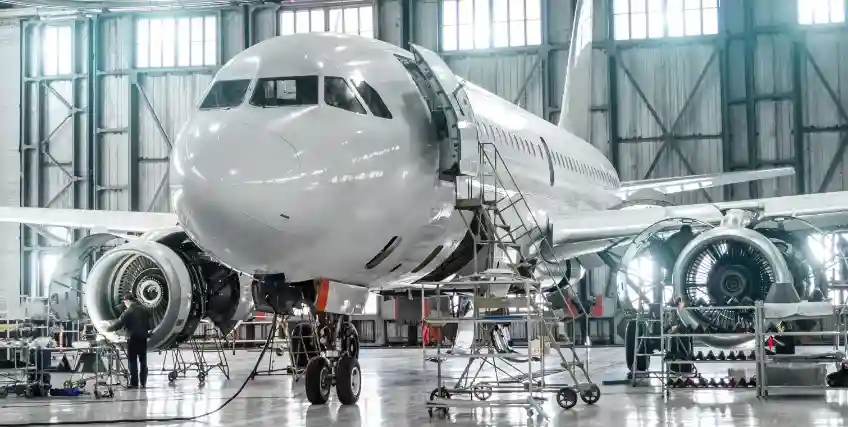Looking for Business Financing?
Apply now for flexible business financing. Biz2Credit offers term loans, revenue-based financing, and commercial real estate loans to qualified businesses.
Set up a Biz2Credit account and apply for business financing.
Buying a plane is a massive financial undertaking for a business. Aircraft ownership requires millions invested upfront and potentially much more than that in long-term maintenance, airport fees, and labor costs. While aircraft financing companies can make it easier to manage costs both upfront and over time, the real financial impact on a business is significantly impacted by interest rates.
Interest rates change based on global monetary policy and market sentiment, and when they do, it makes a big change in the cost of borrowing and repayment terms.
Businesses looking to acquire, replace, or optimize a fleet of business aircraft should understand how the interest rate environment will affect their borrowing abilities. To get the best loan rates and identify the best aircraft finance companies, you need to know what the present cost of borrowing is, so you can work around that benchmark.
In this article:
Understanding how rate shifts alter affordability and the cost of capital from aviation finance
Exploring the most common aircraft loan products offered by banks and aircraft financing companies.
Discovering how aircraft financing companies provide specialized financing solutions to support private aircraft, pre-owned aircraft, or commercial aircraft purchases.
How Interest Rate Shifts Impact the Cost of Capital?
When benchmark interest rates like the Federal Fund Rate or Secured Overnight Financing Rate (SOFR) change, it has an immediate impact on the cost of debt. Since most aircraft are acquired using secured term loans, equipment finance, or various forms of leasing, any change in benchmark rates will have an impact on the borrowing costs for businesses.
Higher interest rates raise the minimum required debt service payments, so you’ll have to allocate more of your cash flow to paying debt. When interest rates are high, smaller businesses or those with thin margins might not be able to cover higher-cost loans.
It's important to remember, too, that the total cost of acquisition isn’t just the sticker price of the plane, but the principal plus all interest and financing costs paid over the life of the loan. Even a small rise in rates can add millions of dollars to the total repayment amount to banks or aircraft financing companies.
Of course, the inverse is also true, that lower interest rates can make financing programs more affordable and accessible to businesses.
Common Financing Options for Aircraft
The two most common financing vehicles for buying an aircraft are debt and leasing. Interest rate fluctuations affect each differently.
Traditional Secured Loans
Using equipment financing, term loans, or government-backed financing from the U.S. Small Business Administration (SBA), the loan is typically secured using the aircraft itself as collateral. With these loans, you may have an option between fixed-rate and floating-rate loans.
Fixed-Rate Loans: The interest rate is locked in for the life of the loan, so you have a predictable repayment and amortization schedule. This supports long-term cash flow planning. However, securing a fixed rate when rates are high locks the borrower into higher costs for the lifetime of the loan. You can always refinance later, but aircraft financing companies or banks will charge refinancing fees.
Floating-Rate Loans: The interest rate adjusts periodically based on changes to the underlying benchmark index, like the Fed Funds Rate. That can be great if rates fall and your debt payments go down, but it can be a serious problem if rates rise and you don’t have the cash flow to cover increased loan costs. A floating-rate structure can put serious strain on aircraft owners if they aren't prepared to meet changes in debt service costs.
Operating and Finance Leases
Operating leases may meet more flexible financing needs for both first-time owners and veterans of the aviation industry. With an operating lease, the lessee (operator of the plane) doesn’t directly pay the interest rate. But the lessor (aircraft financing companies that own the plane) almost assuredly still owes a debt on that plane. So, that means they’re trying to cover their own debt costs by effectively renting the plane out.
When interest rates rise, the lessor’s debt service costs may rise significantly. To keep their margins healthy, they’ll pass the costs directly onto a lessee in the form of a highly monthly lease cost. So, while leasing often seems like a flexible and affordable alternative to debt, it’s still very much subject to interest rate changes.
Lease pricing also incorporates residual value risk. When interest rates are high, it can have a negative impact on the value of the aircraft in the future. Lessors may again pass that cost onto lessees to protect themselves against potential depreciation of the plane’s value. Aircraft financing companies constantly recalibrate these factors.
The Role of Aircraft Financing Companies
Aviation finance is complex, involving highly specialized collateral, international registry laws, and rigorous due diligence. For those reasons, the financing market is dominated by niche aircraft financing companies. Such airplane loan companies can be preferable to banks for several reasons:
Specialized structuring and risk mitigation: Dedicated aircraft financing companies are a little like car companies. They understand plane makes and models very well, knowing how depreciation works for each, and what kind of workload they can generally be expected to take. From business jets to experimental aircraft, this asset knowledge allows them to structure complex deals that can provide more favorable terms than standard bank loans, especially when interest rates are high.
Access to more capital: Aircraft financing companies and lessors can tap into global capital markets to secure funding at more competitive rates than an individual operator.
Hedging and treasury expertise: Aircraft financing companies may offer sophisticated interest rate hedging solutions that allow borrowers to lock in a ceiling on floating-rate payments. That can be particularly valuable if external economic factors lead to significant rate hikes.
Understanding of depreciation: Like cars and other vehicles, airplanes depreciate rapidly. Aircraft financing companies understand the unique depreciation curves and usage models of business aviation, which can allow them to provide fleet management assistance that helps maintain liquidity even when general markets are stressed.
Interest rate volatility can create serious cash flow issues for businesses. Working with aircraft financing companies can help mitigate some of that risk thanks to specialized funding, negotiated rate locks, and the ability to explore lease vs. buy options. While you always need to consider the current interest rate environment, aircraft financing companies can make it easier to modernize or establish a fleet without severely impacting cash flow.
Related Article: Aviation Financing Explained: What You Need to Know
Final Thoughts
The decision to finance an aircraft is a major one that requires long-term strategic calculation. The interest rate environment plays a pivotal role in that calculation. Rate variances directly influence loan affordability, can stretch or compress repayment terms, and may add (or eliminate) millions to the total cost of aircraft acquisition.
By utilizing the specialized knowledge and loan structuring capabilities offered by aircraft financing companies, businesses can get better loan terms that support their long-term goals.
FAQs About Aircraft Financing Companies
1. What is the difference between how a loan and a lease are affected by interest rates?
A loan is directly affected by rising interest rates because a higher interest rate means the borrower pays more interest to the lender. A lease is indirectly affected by rising interest rates. The owner has higher funding costs due to the rising rates on their own debt, and they pass these costs on to the lessee by increasing monthly leasing costs.
2. Should you get a fixed-rate loan or floating-rate loan?
A fixed-rate loan provides payment stability and may protect against future interest rate hikes, making it a good choice when current rates are low or cash is tight. A floating-rate loan offers potential savings if interest rates fall but exposes the business to risk if rates rise. A floating rate can be a good option if the business uses hedging products, like rate caps or anticipates that rates will drop in the future.
3. What is Loan-to-Value (LTV) ratio?
The LTV ratio represents the size of the loan relative to an asset’s value. When interest rates are high, aircraft financing companies will likely lower the LTV so the borrower will have to provide a higher down payment. When interest rates are high, the risk of default and repossession of aircraft increases, resulting in a higher debt servicing cost.
4. Besides interest rates, what other major financial factors do aircraft financing companies consider?
Specialized aircraft financing companies focus heavily on a couple of things beyond the standard balance sheet and tax return review. They may scrutinize the risk related to the plane specifically, including its type, age, maintenance status, and future residual value production. Like any other loan, they’ll also analyze your credit and operational cash flow stability to ensure your business can cover the high fixed costs of a plane debt.
5. How can a business use interest rate forecasts to time borrowing?
If a business projects rates to rise significantly, they might move up their purchasing timeline to buy an asset at a lower fixed rate. If rates are already very high and project to decline in the next year or two, the business may choose to wait. Aircraft financing companies can advise on the strategic timing of acquisition, as the right purchase time can save a business millions in total interest expense.




